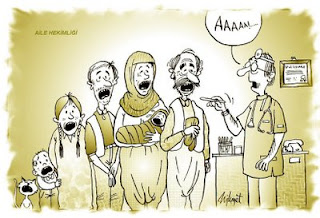
Psychodrama involves a variety of techniques that facilitate thinking
and communicating about relationships. Psychodrama is an integrative process that
includes techniques such as role taking, role reversal, role distancing, improvising,
exaggerating, and replaying, that represents a creative but structured process. The
practice of shifting perspectives allows individuals with AD (Asperger’s Disorder) to develop the capacity for
self-reflection and mental flexibility in social activity. Many social problems are due to a
lack of skills in communication, interpersonal problem-solving and social awareness.
Direct teaching of these types of skills has been attempted with individuals with AD. As
previously mentioned, the various social skill interventions have yet proven to
generalize into the real world of the AD individual.
Psychodrama offers a natural and integrative process for the acquisition and
practice of psychosocial skills. Many of the basic principles of psychodrama are
particularly relevant to individuals with AD. These principles include the use of physical
action rather than narrative, the promotion of authentic encounters, the encouragement
of spontaneity in activity, and making abstract situations more concrete. These
techniques encourage participants to make affirmative statements about their desires,
fears, and intentions. Psychodrama techniques focus particular attention to nonverbal
cues such as voice tone, inflection, intensity, basing, etc. The principles also encourage
the development of empathy through role reversals, as well as providing feedback
through techniques such as sociometry. Psychodrama allows the exaggeration of
behavioral expressions to explore wider ranges of responses. Thus, some peculiarities
of behavior associated with AD are encouraged and accepted in the psychodrama
context.
According to Blatner (1996) many dimensions of personal development may be
enhanced through the use of psychodramatic methods (see Appendix B). Psychodrama
techniques are tools for thinking and communicating about feelings and relationships
that have been used extensively in various forms of individual and group counseling.
Therefore, these tools may be used in isolation and not necessarily in the full context of
a psychodrama reenactment. However, the essence of psychodrama techniques
involves the ideas of spontaneity, imagination and playfulness for developing the
capacity of self-reflection.
One of the major differences between traditional school counseling and therapy
and psychodrama is the idea of having participants enact the relevant events in their
lives instead of simply talking about them. Problems or situations to be explored in a
reenactment may involve the recent or distant past, the present or the future. Both the
external circumstances and the internal aspects of the situation are brought to the
forefront. The psychodrama reenactment should serve as an occasion for increased
self-reflection. Psychodrama typically follows an enactment sequence
and differs from other types of therapy and traditional theatrical drama in that it is meant
to be corrective and educational. Another difference between psychodrama and
traditional therapy is that instead of the focus of treatment being on a patient and/or
client, the focus of attention in psychodrama is on the person called the protagonist. The
person facilitating the enactment is called the director. People who help the protagonist
as supporting players are called auxiliaries. Other people who are present at the time of enactment are referred to as the audience. The location for the psychodrama
exploration is referred to as the stage, but may be any appropriate working location.
The protagonist is the term for the role of the individual who is seeking to work
out problems, gain insight, or to develop an alternative response pattern. Usually the
protagonist’s experiences or needs become the central focus of the group process.
Protagonists take on single or multiple roles, representing not just himself but any other
person or thing of significance in the protagonist’s life.
The director in psychodrama is the facilitator of the exploratory process. The
director is usually the group’s leader and may be a teacher, the school counselor, or the
school psychologist, etc. Since the director is key in orchestrating the multiple aspects
of the enactment, he or she should be appropriately trained with a background in the
various techniques. The auxiliaries provide the protagonist the opportunity to interact
spontaneously with people who take an active part in the scene that is being reenacted.
An auxiliary may be thought of as a "supporting player" in the enactment.
The audience in a psychodrama is not on stage as are the protagonist, the
director, and the auxiliaries, but serve as witnesses to the process. The audience is not
allowed to share their thoughts about the protagonist’s psychological dynamics, but they
are told "tell us what there is in your life that responds to the psychodrama you have just
witnessed". Whether an audience is used or the size of the audience is the option of the
director.
The stage of psychodrama is the place of enactment. It is often helpful to set
aside a special area or room where the enactments are conducted rather than it being a
location of ongoing group therapy. Since the stage can be a formal or informal place, it is most important that a space be designated for the experience, regardless of location
and/or equipment.
The specific techniques used in the psychodrama process have been integrated
into a wide variety of therapeutic modalities. However, several techniques appear
particularly useful in working with AD individuals (see Appendix D). These techniques
are often less sophisticated and more likely to be an existing skill of the director or
facilitator. In addition, various techniques can be utilized within a group therapy (i.e.,
“Breaking In”, “Double”, “Ego Building”, “Role Reversal”, “Shared Secrets”, etc.) or
individual one-one-one counseling context (i.e., “Coaching, “Empty Chair, “Monodrama”,
”Role Presentation, “Puppets”, etc.)
Within a group therapy context, membership composition is often based on
sharing the same difficulty or issue. In the case of students with AD, however, they may
benefit the most from reenacting various situations with non-AD members serving as
auxiliaries in the group. Given their impairments in social interaction, psychodrama
enactments conducted solely by AD individuals may be less effective in correcting
and/or acquiring appropriate social skills. Non-AD auxiliaries may be better able to
model desired behaviors, provide their AD peers with authentic, real-life reactions to
scenarios, and assist them in generating optimal solutions to social dilemmas. In
addition, their feedback and support can enable AD students to readily generalize these
skills to other contexts. For non-AD students, their participation can result in enhanced
understanding and tolerance for their AD peers.











